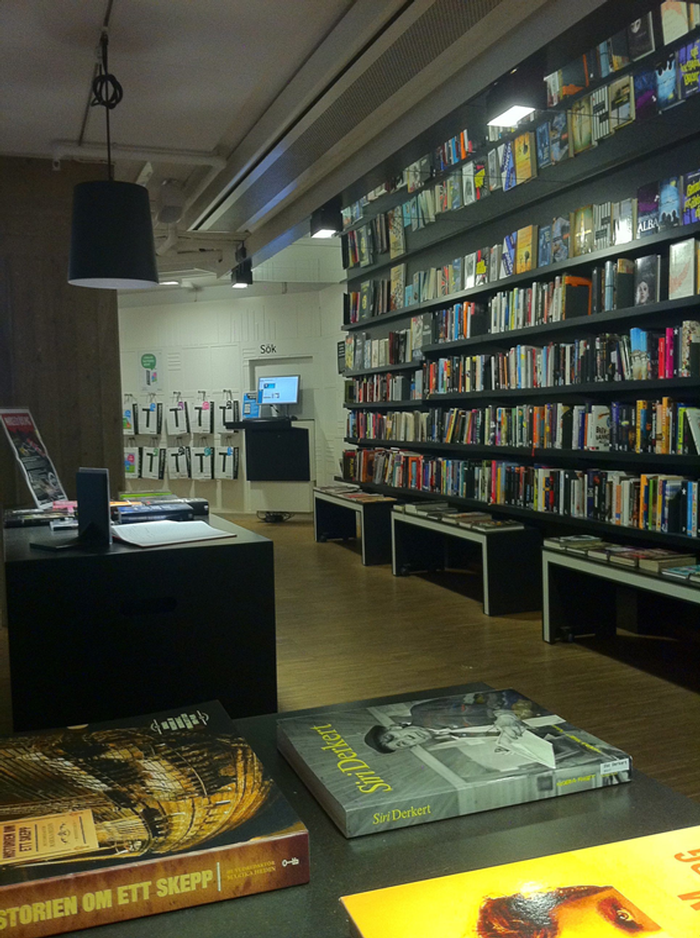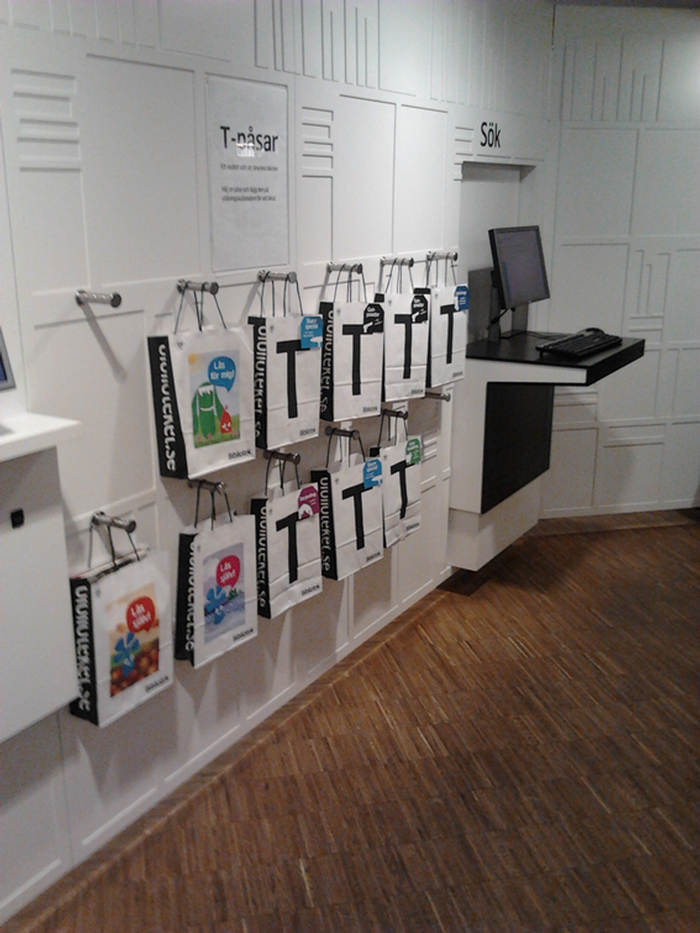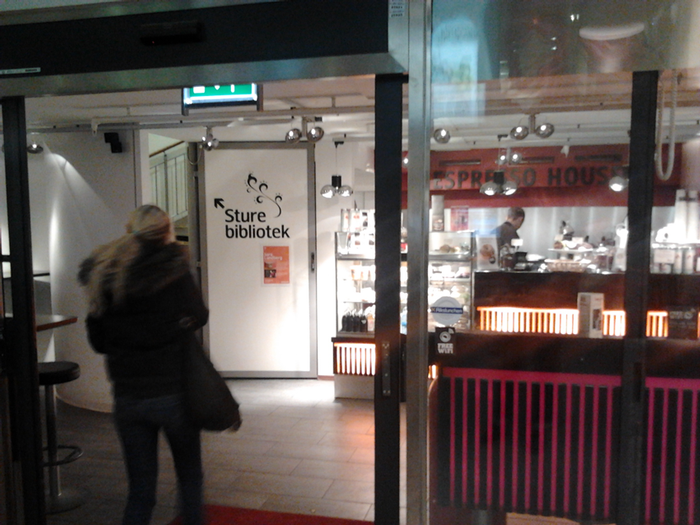[ID:455] A home on the way homeSweden It is easy to come to think of libraries when discussing public architecture. We’ve had public libraries in Sweden since the early19th century and they’ve grown to be one of the most permissive places in the society. Growing up in a small town I remember the library being my home away from home – a place to go to after school to read magazines, look through comic books, listen to books and finding out more information about subjects I didn’t even know I was interested in. The architecture of the library in my hometown wasn’t much to brag about – a dark brick building facing the stream with glazing from floor to ceiling on one of the walls and a sharp distinction between the grown up section and the children’s section, but there are numerous examples of buildings where the architects have used the permissive concept of the library and turned it into great architecture as well.
In this essay I will investigate the library as a building for the public good, with a focus on the new level of accessibility and openness that is Sture Library. What makes this different from other libraries is that the library is located at a mezzanine level inside the subway station and designed to be a place to “pop by” on your way to somewhere else (see fig 1). It reaches out to people who might not have the time, or does not make the time to, or haven’t come up with the idea to visit a library. It spreads the basic idea of the public library, to spread information and the reading experience to the public, through its placement and design. This essay investigates the Sture Library, both in system and in architecture by comparing it to other libraries, especially to the famous Stockholms City Library by Gunnar Asplund (hereby referred to as SCL).
The form of the library has developed through the years. The earliest libraries, containing other written material than records of commercial transactions or inventories, has been found at Ninaveh, in Assyria, and dates back to about 700 BC. This library was more of a private archive, and had little in common with the public libraries we see today. The scarcity and sheer worth of the books made the libraries more of a treasure chamber, protecting the books from thieves and fire, than a room for reading and displaying. When conquering new territories, the books of that territory was seized as loot and the collection of the library expanded. Book thieves were punished severely and archeologists have found books with curses inscribed at the back, threatening any potential thief with damnation and misery. This custom continued to be common in the Middle Ages, confirming the books continued worth. At the the Benedictine nuns monastery there is an example of a book containing a curse that reads as follows:
"For him that stealeth, or borroweth and returneth not, this book from its owner, let it change into a serpent in his hand and rend him. Let him be struck with palsy, and all his members blasted. Let him languish in pain crying out for mercy, and let there be no surcease to his agony till he sing in dissolution. Let bookworms gnaw his entrails ... when at last he goeth to his final punishment, let the flames of Hell consume him forever."
A large collection of books in a library is still a proof of wealth, and an entity to protect, but at the 1850’s the libraries started opening up to the public. At first they had closed bookshelves and you had to ask the librarian for the book you wanted and you were not allowed to review it at home, but had to stay at the library to read. But as the library developed, the visitor was allowed more and more freedom. The SCL by Gunnar Asplund is one of the most known examples of public libraries in Sweden. It was also one of the first to have open shelves where you could browse for and pick out the books you wanted yourself – an important step towards the accessible and permissive library of today. The city was still very proud of their collection of books, though. The architecture of the SCL screams out the importance of the books. Its grandiose entrance, with the stairs leading up to it, efficiently makes you feel smaller before the amount of wisdom and richness that is inside the walls. And the quantity of the collection is effectively displayed on the walls of the rotunda. The SCL is at the breaking point, though, between wanting to protect the books from the public and wanting to enlighten them with the knowledge contained within them. It offers the books to the public, but portrays them, still, as valuable items to handle with care. The books are placed on shelves on the walls of the three levels in the rotunda for two reasons. As mentioned, the quantity of books is efficiently communicated – it is on display, but so are the visitors searching for literature. The reception desk is located at the very center of the rotunda with perfect view of the entire collection of books and visitors, and you are very aware that you are being watched when browsing. This should surely discourage any potential book thief and encourage gentle handling of the valuable books, but on the other hand it also has a negative effect on the personal integrity and the freedom to choose and use the library.
Today the libraries main challenge is encouraging the people to read – not protecting the books as object – maybe protecting the book as an idea but not as physical objects. To do this the libraries in Sweden have made many changes to the library system: providing more functions like access to computers and the internet, movies, music and newspapers and magazines, they’re organizing courses and holds lectures and sell coffee, cake and food. They try to attract the public, not just through their collection of books anymore, but broadcast themselves as a place to hang out, more like a recreation center than a “classic” library. Lately they’ve been moving towards specialization, deciding not to provide the entire collection of written words produced, but helping the public to sort through the massive amount of information that is “out there”. These system changes are starting to show in the architecture as well.
My childhood library had trouble storing the vast amount of books. The plan was very open, planned with the intention to store as many bookshelves as possible. The new specialization allows for smaller libraries with different focus regarding their floor plan. The smaller sizes also allows for libraries to be opened in new places, like the subway stations in Stockholm, where three libraries has been opened since 2009, one of them being the Sture Library. Compared to SCL and its more than two million volumes, the Sture Library, with its one wall of literature (see fig. 2) seems a bit short on books, but it is filled with places to study, read and relax. Compared to the strict furnishing of the SCL, the Sture Library is softer with upholstered lounge chairs, cushions and seats by the window where you’ll see the commuters pass by.
The library has two entranceways, as mentioned before - one on either side of the path to the trains. The placement of the entrances allows you to reach Sture Library without having to make your way through the constant stream of commuters, which makes it easy to “pop-by”. Smaller, less grandiose, compared to the SCL, the entrances communicate a more intimate feeling than the earlier library. The combination of its size, its furnishing, the display of the books and its entrances seem to say that in this library it is you and your need, whether it be for a information, literature or just a quiet moment, that are in the center – not the books. Where the SCL was built for the books it contains, Sture Library is built for the people visiting it. Salomon, a librarian at the Sture Library agrees with this analysis. When he first saw the space, it was still a concrete and glass room and he had serious doubts about the size and potential of the space, but it has turned out better than he hoped for. Again, comparing it to the SCL it is a more permissive place with a cozy feeling. The people in the library ranges from students with homemade sandwiches in zip-lock bags, via scruffy, alcohol-smelling men just popping by to use the bathroom and look through todays newspaper, to ladies in fur, much like the subway system itself. Many people seem to hang out and take a pause at the Sture Library, and this is encouraged through the interior design and placement of the library. Saying that, the Sture Library is still a library of books, and the books are the foundation of its subsistence.
Östermalm, where the library is located, is one of the most fashionable areas of Stockholm, and has a focus on new arrivals and especially attractive titles. It is viewed as a display window for the other libraries in the city, containing the most attractive and newest titles. And much like in a display window, the staff has picked out the items with great care, helping us to browse through the collections of the libraries of Stockholm. The books are on display on the shelf with their cover page facing the visitors, instead of their spines, as is the case with ordinary bookshelves. The library is glazed towards the subway and it uses mirrors to communicate its content to the commuters downstairs. The content, the knowledge of the librarians and the room is viewed as the resource, not the book as an object. There is an attitude that the library wants us to take part of this richness and that they intend to help us find our way through the amount of information that is out there. They even have “T-bags” (see fig. 3), filled with books picked out by the librarians, named with different themes, by the entrance so that the stressed commuters will be able to pick up a bag of good quality books without having to choose themselves.
Sture Library is separated from the stress and noisiness of the subway through glazing. The entrance that is situated directly next to the subway path has automatic doors that lead to the stairway and elevator upstairs, which helps keep the noise down in that area of the library where the reception desk, the children’s section and the computers are situated. To reach the other entrance you need to go through a small coffee shop (see fig. 4). This entrance is an open staircase, which allows for the sounds from the coffee shop and the subway to travel upstairs to the part of the library that contains magazines, newspapers, travel books and movies. The books are placed in between these two entranceways. This interaction between acoustic openness and program is an important part in making the library a success. It makes you aware of the pace and flows outside the library, and to some it reminds them that they’re in a calm place. Maria Larsson, 56, expresses this awareness when talking about her favorite parts of the library; “I enjoy sitting by the window, watching the people go by, reading my paper and not being a part of the stress downstairs.” “Are you not troubled by the sounds from the coffee shop and the subway then?” “No. It’s just background-sound. It makes it even more apparent that I’ve taken the time off from moving from one place to the other”. It seems that not everyone agrees with Maria about the good thing with background-noise, though. By the open staircase, there’s a note saying “Noise? We sell earplugs at the reception desk for 5 SKR!”. When the discussing the noise with librarian Salomon, though, it turns out that they haven’t had to order new earplugs since the opening in 2009 and not even fill up the bowl by the desk that contains them. He agrees with Marias opinion that the noise adds to the atmosphere of the library. “Compared to the noisiness of the subway it is still very calm and quiet in here. Sure there’s a bit noisier than other libraries, but I think it adds to the living-room feeling of this place. We have people sitting here all day long, studying, so I don’t think people are too bothered”.
It is not just the noise from the subway that differentiates the Sture Library from The Stockholm City Library when it comes to acoustics. The SCL is planned to make you lower your voice as to pay your respects to the books. The rotunda has a dome ceiling and hard materials that make the sound travel through the room without anything but the books to absorb the waves. When entering the rotunda, by the grand stairs you reach the center, where the reception disk was originally situated. At this spot, every whisper seems like a shout, due to the form of the roof, and you’ll automatically lower your voice. You also get the feeling that everyone else inside the library will hear your every word, making you very hesitant to make the smallest noise. At Sture Library the feeling is quite the opposite. The walls and roof are clad in sound absorbing materials, and upholstered furniture are placed throughout the library, making the words you speak or the keys you drop sound softer.
Sture Library is quite different from the famous City Library of Stockholm – both in size, placement, content, acoustics, interior design and structure, but it has, like the City Library, taken the library, as an institution, to yet another level of accessibility and openness. Cecilia Aronsson of TEA is responsible for the interior design and. TEA says that ”focus has been on creating a quiet haven for people in motion”. It has been rewarded the Stockholm Chamber of Commerce Urban Environment Price. The price may be prestigious, but even more telling of the libraries impact on the public is the red ”opinion-book” filled with positive responses, and the number of people visiting it daily. On my first visit to the library, every seat and study place was occupied, even though it was a Wednesday at noon. There was a constant flow of visitors inside the library, just as there was a constant flow of commuters passing by outside of it. By placing it inside the subway station Sture Library has taken my childhood ”home away from home”-library to a new level. It has become a ”home on the way home”-sanctuary.
If you would like to contact this author, please send a request to info@berkeleyprize.org. |




